Welcome to BadwaterJournal.com©
BOOKS AND ARTICLES OF INTEREST
Welcome to BadwaterJournal.com©
BOOKS AND ARTICLES OF INTEREST
Hans Joachim Schellnhuber in Der Spiegel
“Leading German climate scientist Hans Joachim Schellnhuber talks to SPIEGEL about the lessons of the Fukushima disaster, the future of nuclear energy in Germany and why our society needs to be transformed.”
See the interview HERE
The Path we’re on
“The entire affluence-based economic model of the postwar era, be it in Japan or here in Germany, is based on the idea that cheap energy and rising material consumption are supposed to make us happier and happier. This is why nuclear power plants are now being built in areas that are highly active geologically, and why we consume as much oil in one year as was created in 5.3 million years. We are looting both the past and the future to feed the excess of the present. It's the dictatorship of the here and now.”
The Great Corn Con
by Steven Rattner, New York Times Opinion page June 24, 2011
FEELING the need for an example of government policy run amok? Look no further than the box of cornflakes on your kitchen shelf. In its myriad corn-related interventions, Washington has managed simultaneously to help drive up food prices and add tens of billions of dollars to the deficit, while arguably increasing energy use and harming the environment.
But rather than ameliorate the problem, the government has exacerbated it, reducing food supply to a hungry world. Thanks to Washington, 4 of every 10 ears of corn grown in America — the source of 40 percent of the world’s production — are shunted into ethanol, a gasoline substitute that imperceptibly nicks our energy problem. Larded onto that are $11 billion a year of government subsidies to the corn complex.
Corn is hardly some minor agricultural product for breakfast cereal. It’s America’s largest crop, dwarfing wheat and soybeans. A small portion of production goes for human consumption; about 40 percent feeds cows, pigs, turkeys and chickens. Diverting 40 percent to ethanol has disagreeable consequences for food. In just a year, the price of bacon has soared by 24 percent.
See it here <http://www.nytimes.com/2011/06/25/opinion/25Rattner.html?_r=1&hp>
Safety Myth Left Japan Ripe for Nuclear Crisis
by Norimitsu Onishi, New York Times June 24, 2011
Over several decades, Japan’s nuclear establishment has devoted vast resources to persuade the Japanese public of the safety and necessity of nuclear power. Plant operators built lavish, fantasy-filled public relations buildings that became tourist attractions. Bureaucrats spun elaborate advertising campaigns through a multitude of organizations established solely to advertise the safety of nuclear plants. Politicians pushed through the adoption of government-mandated school textbooks with friendly views of nuclear power.
The result was the widespread adoption of the belief — called the “safety myth” — that Japan’s nuclear power plants were absolutely safe. Japan single-mindedly pursued nuclear power even as Western nations distanced themselves from it.
See it here <http://www.nytimes.com/2011/06/25/world/asia/25myth.html?hp>
Free publication!
link to download .pdf
http://www.unep.org/resourcepanel/Publications/Decoupling/tabid/56048/Default.aspx
United Nations Environmental Programme UNEP (2011)
Decoupling natural resource use and environmental
impacts from economic growth,
A Report of the Working Group on Decoupling to the
International Resource Panel.
Fischer-Kowalski, M., Swilling, M., von Weizsäcker, E.U.,
Ren, Y.,Moriguchi, Y., Crane, W., Krausmann, F., Eisenmenger, N.,
Giljum, S., Hennicke, P., Romero Lankao, P., Siriban Manalang, A.
Copyright © United Nations Environment Programme, 2011
“This report has provided evidence that it is time to recognize
the limits to the natural resources available to support human
development and economic growth.”
Growing resource constraints will not affect everyone equally. The world’s
poorest people will be deprived of opportunities to develop, even though they
are minor consumers of most materials covered in this report. At the same
time, the world’s richest nations will find it increasingly difficult to enjoy their
current levels of consumption and the fruits of astable world if resource
depletion continues and resource prices increase.”
As the world’s population grows from the current 6.8 billion people
(2010 estimate) to 8 billion by 2030, and perhaps at least 9 billion
by 2050 (United Nations, 2004b), cities will most likely become the
home for the additional 2 to 3 billion people of the future world population.
A major driver of the overall increase in raw material extraction and use is population numbers
(Steinberger et al., 2010; Krausmann et al., 2008). The world’s, and each country’s, material use (called domestic material consumption, DMC) is tightly coupled to the number of inhabitants.
Resource decoupling means reducing the rate of use of (primary) resources per unit of economic activity.
This ‘dematerialization’ is based on using less material, energy, water and land resources for the same economic output. Resource decoupling leads to an increase in the efficiency with which resources are used.
“The 20th century was a time of remarkable progress for human civilization. Driven by scientific and technological advances, the extraction of construction materials grew by a factor of 34, ores and minerals by a factor of 27, fossil fuels by a factor of 12, and biomass by a factor of 3.6 (Figure 2). This expansion of consumption was not equitably distributed, and it had profound environmental impacts. Over-exploitation, climate change, pollution, land-use change, and loss of biodiversity rose toward to top of the list of major international concerns.”
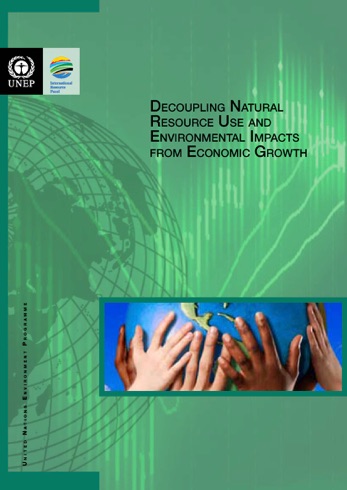


The Search for the Ultimate Sink
by Joel A. Tarr
University of Akron Press 1996
limited availability
at Amazon click HERE
Tarr shows how the rapid urbanization in America’s cities led to water borne disease. The introduction of water utilities routing treated drinking water to homes immediately resulted in wastewater discharged to inadequate privy vaults and outhouse pits. The need for sewering infrastructure was grudgingly recognized but the response mostly inadequate leading to a crisis in water pollution.
Automobile transportation replaced the smelly horse herds in major cities. In New York, manure was piled in huge piles on the corners and dead horses were dumped from barges into the ocean at night.
Tarr’s scholarly work points out that each urban solution that sought to send pollution down the drain or out of sight resulted in a new aggravated pollution problem. Though manure no longer piles up on street corners, transportation pollution of heavy metals, combustion gases and chemical toxics is changing the planet.

What’s Gotten Into Us?
Staying Healthy in a Toxic World
by McKay Jenkins
Random House 2011
at Amazon click HERE
Still reading:
From Amazon:
• Our water: Thanks to suburban sprawl and agricultural runoff, 97 percent of our nation’s rivers and streams are now contaminated with everything from herbicides to pharmaceutical drugs.
• Our bodies: High levels of hormone-disrupting chemicals from cosmetics, flame-retardants from clothing and furniture, even long-banned substances like DDT and lead, are consistently showing up in human blood samples.
• Our homes: Many toxins lurk beneath our sinks and in our basements, of course, but did you know that they’re also found in wall-to-wall carpeting, plywood, and fabric softeners?
• Our yards: Pesticides, fungicides, even common fertilizers—there are enormous, unseen costs to our national obsession with green, weed-free lawns.
Jazz Religion, the Second Line, and Black New Orleans
by Richard Brent Turner
Indiana University Press 2009
at Amazon HERE
Ancient evil underlies the birth of Jazz. The inhumanity of slavery and ethnic cleansing repressed the cultural heritage of Africans who were transported to plantations in Haiti and New Orleans --before it was part of America. Music and dancing were modes of interpersonal communication back then, and drums told stories at long distance. Racist Jim Crow repression after the Civil War ghettoed together disparate black, creole and native American groups and their music remained the meeting place, the mode of bridging ethnic gaps and invoking the past. Funeral marches, brass bands, and mystic invocations of voodoo queens melded with the staccato beat of drums and the expressive dance and improvisational song to make jazz. Jazz is still a mode of living communication from forefathers and mothers, beyond words, into the spirit.
At first it reads like a doctoral thesis, thick with supporting references and redundant passages emphasizing themes. On the second read through, its more enjoyable as the matrix of inter-relations laid out becomes more familiar.
Richard Brent Turner, Professor of Religious and African American Studies at the University of Iowa traces the origins of Jazz and the Second Line back to African and Haitian ‘circum- Atlantic diaspora’ roots making clear that the Second Line.
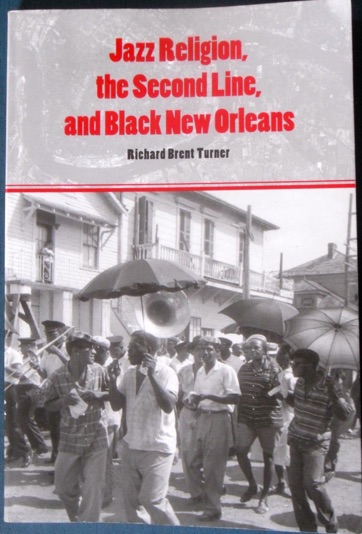
The New Jim Crow
by Michelle Alexander
The New Press New York 2010
at Amazon HERE
The War on Drugs has resulted in the wholesale criminalization of a generation of black men and women. 31 million people have been arrested for drug violations since the war on drugs began.
Mass incarceration (more than 500,000 incarcerated on drug offenses in America today) has torn a hole in the social structure of the black community, affecting the right to vote and employment prospects for many young offenders who have to grow up and out of the mistakes with little rehabilitation.
“By the end of 2007,more than 7 million Americans--one in every 31 adults--were behind bars, on probation, or on parole.”
“Barred by law from invoking race explicitly, those committed to racial hierarchy found they could install a new racial caste system without violating the law or the new limits of acceptable political discourse, by demanding “law and order” rather than “segregation forever.”
This great book sets out the argument that the ‘War on Drugs’ masked a racist attack on the black community, turning the lower economic class, the powerhouse of civil and economic rights protest, in upon itself and plowing billions into building a tragic prison-industrial complex where underpaid, outsourced employees cage desperate young men separated from family and community.
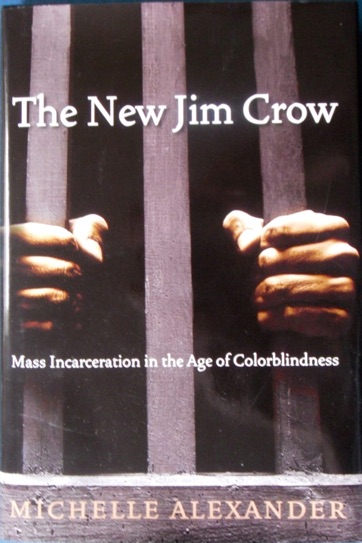


SECRETS: A Memoir of Vietnam and the Pentagon Papers
This is one of my top ten books. Daniel Ellsberg was a dedicated young soldier in Vietnam, analyst for the Rand Corporation and advisor to the National Security Counsel. This is his tale of personal courage and lucid confrontation with ethical dilemma, as he sought to tell the truth about the failing war in Vietnam. We dropped three times the number of bombs in Indochina than in all of WWII
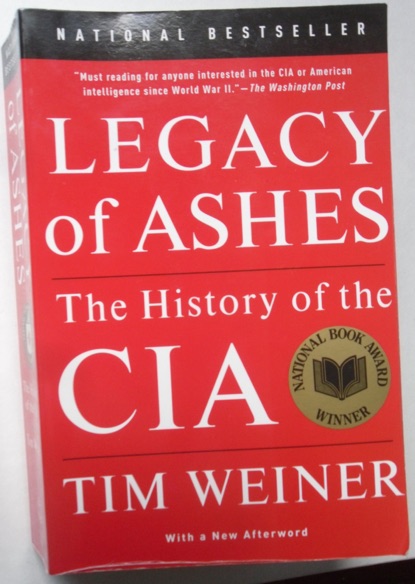
LEGACY OF ASHES: The History of the CIA
Why do we even have checks and balances of government under the Constitution when the run amuck Executive Branch can embroil us in the most lethal and predatory foreign intrigues, inspired by corporate greed and political paranoia?
For one reason or another, it has been deemed necessary to commit wealth and American blood to toppling, meddling, killing, assassinating and bombing the leaders of dozens of countries since WWII. Tim Weiner’s book describes how most of that history consisted of the CIA tripping and stumbling as it sought to develop secret information sources in foreign states. Thousands of American agents have been exposed and executed.
Presidents at times distrusted the agency’s information and for good reasons. Pg 494:
“ In the weeks before the seven week air war on Iraq began on January 17, 1991, the Pentagon invited the CIA to pick bombing targets. The agency selected, among many other sites, an underground military bunker in Baghdad. On February 13, the air force blew it up, but the bunker was being used as a civilian air raid shelter. Hundreds of women and children died. The agency was not called upon to pick targets after that.”
FREE: MSD Green Infrastructure Design Manual
Get it download from MSD’s main webpage at <http://www.msdlouky.org/>
MSD has assembled a compendium of approved projects that if widely adopted by businesses and residents in our Metro Louisville Combined and Sanitary Sewer areas, would reduce polluting sewer overflows, save water bill money and retain water in the upper elevations of watersheds adding to consistent stream flows.
See AREA DRAINS
See GOOD NEWS
See OPEN HOUSE
MSD also is offering reductions in storm water discharge utility monthly charges for approved green infrastructure project installations. However the application for the incentive program requires professional design engineer planning --might be a costly application.
These projects are pointing the way to the next ten years in Louisville and much water quality improvement could be obtained by reducing rain water that causes sewer overflows.

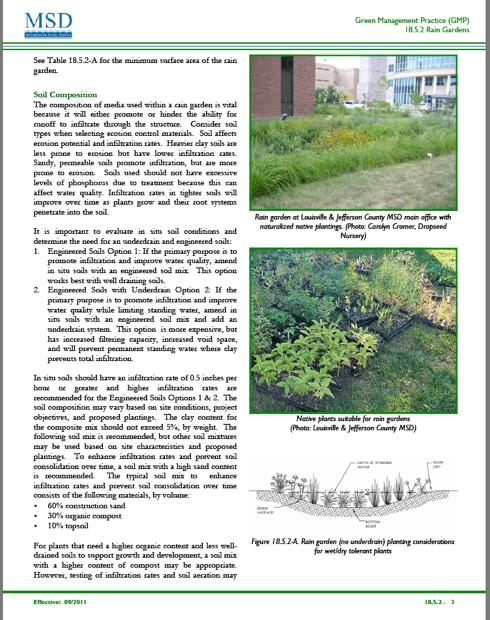

pages from the Green Infrastructure Manual describe possible projects, but to get the incentive money design and monitoring have to be according to MSD’s Design Manual
The Polluters by Benjamin Ross and Steve Amter
Oxford University Press 2010
available at Amazon click HERE
Ross and Amter provide a well researched and scholarly history
of the chemical industry’s paranoic defense of its market share.
The Clean Air Act and Clean Water Act legislation ultimately
passed bears the imprint of heavy industrial lobbying.
Protections for the public from killing smog and industrial toxics
only passed after horrific deadly episodes that temporarily built
consensus among legislators otherwise too pro-industry to
count the cost in human disease and environmental damage.
What industry succeeded in doing through consistent application
of money and influence, was shift the burden to the public to
prove the harmfulness of untested chemicals rather than requiring
industry to prove their safety before marketing.
Veblen’s Theory of the Leisure Class, is a foundational book for understanding human society and is as relevant today as when first published in 1899.
The leisure class exempts itself from coarse manual labor and since barbarian times, such labor has been associated with women’s crafts and drudgery services to the leadership by lower caste workers that have no honor.
“The upper classes are by custom exempt or excluded from industrial occupations and are reserved for such employments to which a degree of honor attaches. Chief among the honorable employments in any feudal community is warfare; and priestly service is commonly second to warfare.”
“The quasi-peaceable gentleman of leisure then, not only consumes of the staff of life beyond the minimum required for subsistence and physical efficiency, but his consumption also undergoes a specialization as far as the quality of goods consumed, He consumes freely, and of the best in food and drink, narcotics, shelter, services, ornaments, apparel, weapons and accoutrements, amusements, amulets and idols, or divinities . . . since the consumption of these more excellent goods is an evidence of wealth, it becomes honorific; and conversely the failure to consume in due quantity and quality becomes a mark of inferiority and demerit.”
Conspicuous consumption, a term coined by Veblen is still the signal of our status that Americans for sure, send to each other as we decorate our castles, pile up boats, beachfronts and world travel and dine on Alaskan King crab.
Deconstructing the cult of honor attached to war making is one of those three or four things we need to do to advance to the next level of civilization– out of these barbaric times.
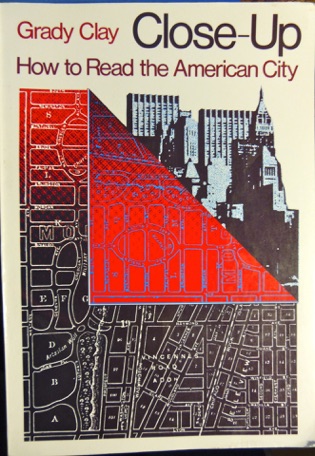
Stacktowns, urban fragments, strip development, Pit-stop America, “Close Up- How to Read the American City,” is an enjoyable 180 pages that shares the author’s unique perspective on urban form.
Louisville’s own, Grady Clay had an interesting WFPL segment called, “Crossing the American Grain,” and was also the longtime editor of Landscape Architecture Magazine (1960-1985). His walks through the contemporary urban jumble were informed by a deep understanding of the city in history, formed by its various economic and social currents and always manifesting surprising and unplanned juxtapositions that attract the artists eye. Includes interesting history such as this picture of the carbide slurry waste impoundment collapse in Louisville, Rubbertown in 1972.
This is ‘thinking outside the box’ and seeing outside the lines. I got my copy used from Amazon online.

Red
Orchestra:
The story of the
Berlin under-
ground and the
circle of friends
who resisted
Hitler
Red Orchestra by Anne Nelson,
is the inspiring story of the
privileged Berliners-- army officers,
writers and actors who risked
torture and death to pass Hitler's
secret military plans to his enemies. The story follows young authors and actresses as they watched the brilliant artistic and theatrical movement of urban Berlin in the 1930s wither before Hitler's program of fascist conformity. Hitler's anti-Jewish fascism would ultimately convert the German independent movie industry into a Nazi propaganda organ.
An unhappy lesson is how little effect the great personal sacrifices of the artists-turned-spies actually had on events because of the 'top down' hierarchy of Stalin's military intelligence apparatus that received the secrets. Nelson recounts on page 211 that Stalin had received more than "a hundred warnings from various sources" before the German invasion of June 1941 took place. He ignored them. When the invasion occurred, Stalin purged those around him who had witnessed his stubborn refusal to believe Hitler would attack him.
Personal advancement always advises us to take the conservative course, to hold our tongue when the boss brutalizes a co-worker, to remain silent when political leaders make foolish self-serving pronouncements. This self-serving reticence provides an invitation for the ruthless demagogue to push his agenda against common sense. In Berlin in 1938, individuals spoke against Hitlerism and vilified it in their art and theater. Hitler was considered a dangerous clown by the Berlin cosmopolitan social elite, that is until his madness became institutionalized.
The Nazi's rise to political dominance is very well narrated here. Hitler's immoral excretions are seen to cause a sensational public reaction among the receptive segment that exploits dark forces, both anti-intellectual and intolerant. Berliners who had reveled in a free society with avant-garde expression of satire and irony aimed at the political scene were forced into dormancy, terrorized by pervasive mutual distrust and the consequences of betrayal. Principled dissidents soon suffered public beatings and torture even summary execution if you were a Jew, and the vocal opposition was driven underground. Each of us has to wonder if we would have the same courage to persist in highly dangerous conduct in a similar situation.
The Berlin underground resistance attempted to erect a durable network of underground participants to pass military secrets to foreign spies, to print and distribute subversive pamphlets, and to encourage receptive members of the silent public that Hitler's genocide against Jews and Bolsheviks was morally corrupt and had to be overthrown. Immersion in the story caused me to compare the artists plight to what we see today as media outlets are consumed by interests pushing a similar conservative agenda and how apathetic the general public is to the melt down of a vibrant free press.
To a large extent the principled Berliner's sacrifice was in vain and their personal courage exists only as a testament to the potential of individuals to resist collective insanity. That is not a small contribution.


THE MASS PSYCHOLOGY OF FASCISM
by Wilhelm Reich
Without question one of the most controversial scientists of human behavior and psychology, Wilhelm Reich taught sexual freedom in an age of brutal sexual repression, organized opposition to the emerging German fascist movement in the 1930s and spoke out brilliantly and courageously against moralistic repression until his death in America in 1957.
He managed to enrage everyone from the Christian right to the U.S. Food and Drug Administration. His colorful later history should not dissuade serious readers from reading the important , insightful analysis of the Nazi fascists in Mass Psychology of Fascism. Written in the 30s then later revised and edited, Reich sought to explain how fascism could take root in German culture among the broad masses.
What he saw was a sexually repressed people, confused and unfulfilled in their daily lives, who found a sort of personal salvation in the identification with fatherland, the quest for racial purity and the cruel authoritarian ethnic cleansing program of the Nazi’s. Reich is most interesting examining the social roots of the clearly psychotic mass movement that led to brown shirted storm troopers.
The particular form of fascism that took shape in the 1930s in Germany was a function of that time and place, and the world has moved on including a sexual revolution that Reich made no small contribution to.
However, Reich’s insights remain
relevant and make the book a great
read in 2012 in the U.S.A.
Reich’s examines the basic formation
of personality as influenced by family
and society. He sees the human as
innocently and purposefully directed
by the biological impulse for sexual
contact which impulse in the 1930s
among German families had become
armored with social prohibitions.
Religious mysticism and family
patriarchy alike were established to
maintain control and channel youth
away from sex experimentation that
today is unremarkable. But even
today the same repressive religious
and patriarchal impulses grow where deep personal dissatisfaction is directed away from rational and fulfilling human contact into the service of mystical ideas. One thinks about the starving suicide bomber who is taught that a sexual reward of pliant virgins waits on the other side of death. Why do humans keep coming up with these ideas? And what happens when entire societies become so misdirected from honoring themselves and their communities and become psychotically immersed in serving mystical ends? The Mass Psychology of Fascism is a good vantage point for looking at how twisted and misdirected the politicians can become, and how we empower them out of our own misery.

As the noise finally fell back, King’s voice rose above it to fire again.
“There comes a time, my friends, when people get tired of being thrown across the abyss of humiliation, where they experience the bleakness of nagging despair,” he declared. “There comes a time when people get tired of being pushed out of the glittering sunlight of life’s July, and left standing amidst the piercing chill of an Alpine November. There . . . “ King was making a new run, but the crowd drowned him out. No one could tell whether the roar came in response to the nerve he had touched, or simply out of pride for a speaker from whose tongue such rhetoric rolled so easily . “We are here–we are here because we are tired now,” King repeated. . . .
“My friends, he said slowly,”I want it to be known–that we are going to work with grim and bold determination–to gain justice on the buses of this city. And we are not wrong. We are not wrong in what we are doing.” There was a muffled shout of anticipation, as the crowd sensed that King was moving closer to the heart of his cause. “If we are wrong–the Supreme Court of this nation is wrong,” King sang out. He was rocking now, his voice seeming to be at once deep and high pitched. “If we are wrong–God Almighty is wrong!” he shouted., and the crowd seemed to explode a second time, as it had done when he said they were tired. Wave after wave of noise broke over them, cresting into the farthest reaches of the ceiling. They were far beyond Rosa Parks or the bus laws. King’s last cry had fused blasphemy to the edge of his faith and the heart of theirs. The noise swelled until King cut through it to move past a point of unbearable tension. “If we are wrong–Jesus of Nazareth was merely a utopian dreamer and never came down to earth!” This was too much. He had to wait sometime before delivering his soaring conclusion, in a flight of anger mixed with rapture: “And we are determined here in Montgomery– to work and fight until justice runs down like water , and righteousness like like a mighty stream!”
Page 140

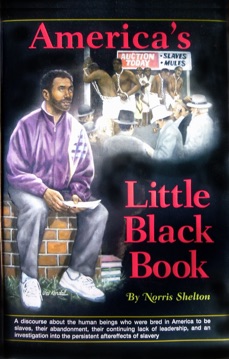



Chronic black poverty as a continuing legacy of slavery and what to do about it
Johnson thoroughly positions the cotton plantation industry in the developing American social context, finding that the Jefferson ideal of freemen farmers as the healthy fabric of American democracy was instead transmuted into a race paranoic slaveocracy where elite white industrial tycoons in the minority waged witch hunts for slaves accused of conspiring in secret to foment slave revolts. Violent examples were made on a regular basis to demonstrate the absolute authority of the slave owner and his ultimate right to subject his black chattel to his whim.
Ira Katznelson, demonstrates lucidly and sequentially that the post slavery experience after 1865 did not consist of a benevolent national government passing legislation to rehabilitate Descendants of Slaves. Instead powerful southern political factions exerted their influence in Washington to deny what should have been a fair share of program benefits to descendants. Katznelson’s detailed history recounts the race prejudice infecting the New Deal, GI Bill and other programs that limited in some case drastically the share received by descendants of slaves.
Todd R. Clear describes the cumulative destructive impact of America’s mass incarceration program of the justice industrial complex on the Descendants of Slaves communities. This modern day juggernaut of injustice continues to exploit the legacies of desperation and disadvantage caused by slavery. Using police methods of arrest and imprisonment against the Descendants of Slaves is little more than a ‘New Jim Crow” era of brutal response to slavery’s cultural legacy.
Norris Shelton’s book speaks from a life of personal experience to the Descendant of Slaves and is easily readable and conversational. Clear’s book is supported with statistics and investigations while both Katznelson and Johnson are erudite historians with broad vision. Shelton’s less academic approach seeks change in the near term with a practical plan for a national Renaissance by tailored programs for rehabilitating slave descendants culture and identity. Chronic disadvantage for slave descendants is a national tragedy that descendants of slave owners have yet to face.
In a heartfelt plea for self recognition and national identity, Louisville author, Norris Shelton, in America’s Little Black Book, urges readers to reject the label of ‘African American’ as part of the mis-education that perpetuates ignorance of the true history of the Descendants of American Slaves. Present day inhabitants of America’s economically and socially disadvantaged black ghettos have a more than 200 year history of oppression amounting to genocide in the United States. They have no more relationship to African history than ‘European Americans’ who have lived in America for generations have to Europe. The true and much more formative lineage of Descendants of Slaves traces back through the importation of people as chattel animals and their subsequent selective breeding and ‘cultural death’ at the hands of slave owners.
Shelton would have Americans awake to their history and find new power and direction--even pride- in the fact that they have persevered through adversity and their hands and backs built the first American prosperity that they were never allowed to share.
Slavery fractured the black culture, leaving legacies of white indoctrinated religious superstition as the most potent present day cultural authority. As a result, the victims continue to feel shame for slavery and perpetuate patterns of subservience to the white master. Poverty and cultural advancement will come through recognition of the historical fact of slave history and that racist oppression left living scars on the social functioning of America’s Descendants of Slaves that still divide the community.
Walter Johnson, in River of Dark Dreams lays out in detail the economic and social landscape of the Mississippi cotton plantations in his careful history that details the multi-million dollar international trade in cotton and finished goods that was built on the foundation of slave labor.